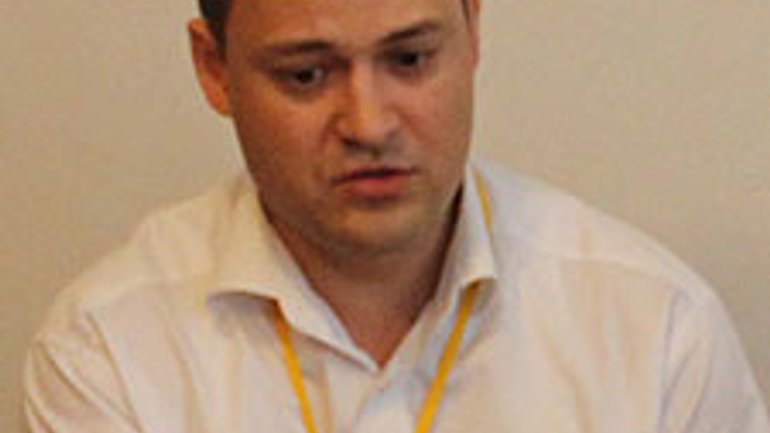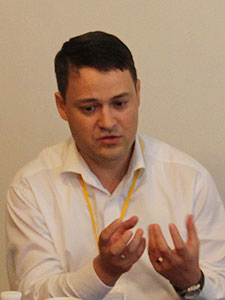Christianity in Ukraine: Commentary on Statistics

 Christianity in Ukraine remains the focus of attention of many overseas researchers – missiologists, sociologists, religious scholars, and journalists. Unlike other former Soviet republics, it is not completely clear what is happening in Ukraine. Ukrainian Christianity remains dynamic and diverse, and in Ukrainian society there is a growing interest in Christianity and a demand for renewal and for the Church to take a more active role in society.
Christianity in Ukraine remains the focus of attention of many overseas researchers – missiologists, sociologists, religious scholars, and journalists. Unlike other former Soviet republics, it is not completely clear what is happening in Ukraine. Ukrainian Christianity remains dynamic and diverse, and in Ukrainian society there is a growing interest in Christianity and a demand for renewal and for the Church to take a more active role in society.
At the same time some very subjective data, not numbers, serves as the basis for analysis. Statistics themselves cannot serve as a reliable foundation, as they depend on methodological presumptions and unusual methods.
While statistics of interested missiological centers indicate a continuing Christian boom in Ukraine [1, P. 10], more fundamental and far-reaching studies point to a traditionalist consensus and slowed growth of new confessions [2]. According to Ukrainian analysts, slower growth rates have been replaced by a decrease in church membership and quantity of churches, a loss of confessional identity and the growth of “mere Christianity.” [3]
Authorities and national expert centers offer and analyze the number of religious organizations, but don’t say anything about the number of church members. At best they use public opinion survey data.
Confessions prefer to talk only about the number of their own churches, and name only estimates of their own membership. This could be a sign of poor communication between church leaders and their members, and of an ineffective record keeping system. Maybe this is why confessional representatives are silent among sociologists, but boldly inflate their numbers in front of less competent listeners.
For instance Orthodox churches don’t measure their membership in absolute numbers but as a percentage of the country’s population. It is easier to measure by subtracting those who “aren’t one of us,” and then simply consider the rest “one of us.”
There is not much more clarity among Protestants. It is often difficult to verify data because of a lack of interest among denominations, who indulge in wishful thinking.
Every neo-Protestant denomination claims to be the most dynamic. Every traditional church tries to show at least slow growth.
On the whole the data confirms growth among Charismatic churches and a slowing of growth among Evangelical Christians.
But we need to take into account the fact that the church membership of neopentecostals is the least stable. It has a very high fluctuation in membership, frequent changes in confessional identification, double statistics (some of the churches are counted by several denominations, as a result of which the overall statistics for Protestantism and neopentecostalism look fairly impressive).
The flock of Baptists and Pentecostals is more stable, but less dynamic. According to the Ukrainian Baptist Union, in 2012 almost half of the churches in the union did not baptize a single person [4]. At the same time the union’s strategic plan remains the same, planning for a doubling of membership by 2020.
Surprisingly, the statistics of foreign researchers often rely on the unconfirmed statistics of denominations. Therefore in 2010 the membershp of the Baptist Union was measured at 151,000. These statistics are impossible to check, because there are no other statistics. However there are the Razumkov statistics, which reveal a decrease in the percentage of Protestants from 2% (in 2000) to 0.8% (in 2013) [3, page 27].
Beyond the international reports there remain other trends noted by national experts – an increase in the number of “plain Christians,” “plain Orthodox,” and “plain Protestants;” a complication of the religious identity of Ukrainians, which includes not only Orthodox, but also Greek Catholics and Protestants; the disappearance of Atheists as a social group, and the double meaning of self-identification as a “non-believer.”
To be a Ukrainian today means to be, first and foremost, Orthodox, but also a Greek Catholic. Upon weakening the connection between Ukrainians and Orthodoxy, Protestants also got a chance at gaining a Ukrainian identity. At the same time the Catholics remain part of “Latin,” or “Polish” Christian culture.
In light of the Orthodox consensus in Ukraine the number of atheists and non-believers is continuing to decrease. Apparently a number of the free thinkers and agnostics have fit into the overly wide category of “Orthodox.” If, in order to be counted as Orthodox it is enough to simply be called that, with no need to confirm one’s beliefs, then it is possible to be an Orthodox atheist or an Orthodox occultist.
Therefore Ukraine impresses not so much with its number of new religious organizations and their members as with the new structure of religious life. Public demand for traditional and new forms of Christianity is growing steadily, and the existence of confessions is satisfying it less and less. Here sociology approaches ecclesiology and missiology; sociology measures the demand, but the Church must respond to it.
Bibliography
- East-West Church Ministry Report. – 21.2, Spring 2013.
- Christianity in its Global Context, 1970–2020: Society, Religion, and Mission. - Center for the Study of Global Christianity, Gordon-Conwell Theological Seminary, South Hamilton, Massachusetts, 2013. (http://www.gordonconwell.edu/resources//Global-Context-of-Christianity.cfm)
- “Religion and authority in Ukraine: Problems in the relationship.” Informational materials for the round table on “Church and state relations in Ukraine in 2013: A movement for a partnership between the state and the church or towards a crisis?” April 22, 2013 – Kiev 2013.
- “The number of Baptists in Ukraine is Decreasing” // www.religion.in.ua










